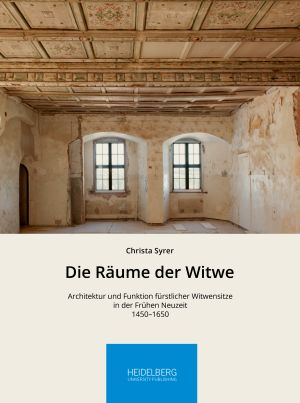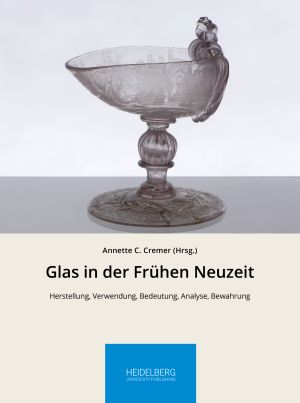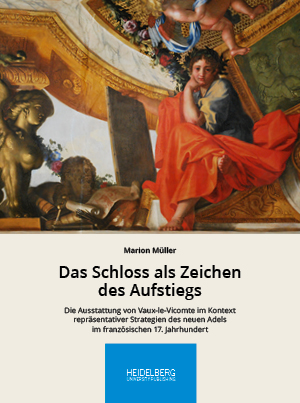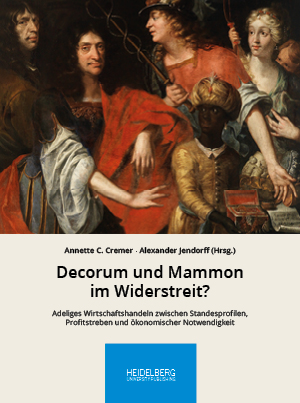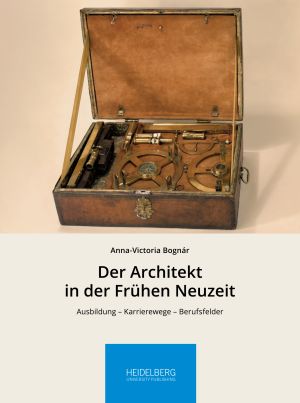Höfische Kultur interdisziplinär (HKI)
Schriften und Materialien des Rudolstädter Arbeitskreises zur Residenzkultur
The Rudolstädter Arbeitskreis zur Residenzkultur e.V. has founded a series of academic papers in 2019, which presents to the public a series of relevant studies, materials and works on the subject of courtly art and culture in the early modern Roman-German Empire and Europe in general.
The products of courtly culture are today preserved to a large extent in the form of residential buildings, museum collections, archives and libraries, which are visited, read and heard in concerts, but which often elude immediate access and understanding. The Rudolstädter Arbeitskreis zur Residenzkultur e.V. therefore devotes itself to this diverse material culture, cultural practices and their contemporary interpretation from a comprehensive cultural-scientific and broad-based interdisciplinary perspective. It uses a concept of culture that refers to the "representation" of social habitus or lifestyles in written, figurative, object-like, tonal, architectural and in the broadest sense artistically designed forms.
The new book series continues the long-standing journalistic work of the Rudolstädter Arbeitskreis zur Residenzkultur e.V., which was founded in 1999 as an interdisciplinary scientific association, adding to the series the modern concepts of open access and print-on-demand availability.
The Rudolstädter Arbeitskreis zur Residenzkultur e.V. has founded a series of academic papers in 2019, which presents to the public a series of relevant studies, materials and works on the subject of courtly art and culture in the early modern Roman-German Empire and Europe in general.
The products of courtly culture are today preserved to a large extent in the form of residential buildings, museum collections, archives and libraries, which are visited, read and heard in concerts, but which often elude immediate access and understanding. The Rudolstädter Arbeitskreis zur Residenzkultur e.V. therefore devotes itself to this diverse material culture, cultural practices and their contemporary interpretation from a comprehensive cultural-scientific and broad-based interdisciplinary perspective. It uses a concept of culture that refers to the "representation" of social habitus or lifestyles in written, figurative, object-like, tonal, architectural and in the broadest sense artistically designed forms.
The new book series continues the long-standing journalistic work of the Rudolstädter Arbeitskreis zur Residenzkultur e.V., which was founded in 1999 as an interdisciplinary scientific association, adding to the series the modern concepts of open access and print-on-demand availability.
Höfische Kultur interdisziplinär (HKi)
Series Editors
- Annette Cremer
- Stephan Hoppe
- Matthias Müller
- Klaus Pietschmann
Published so far
Die Münchner Residenz als kommentierte 3D-Rekonstruktion: Eine Analyse der räumlichen und funktionalen Entwicklung im Gefüge der Stadt zwischen 1467 und 1614
This study provides a new synthesis of the architectural history of the Munich Residence and its urban environment from the mid-fifteenth century to the eve of the Thirty Years’ War. It is primarily based on a systematic and comprehensive analysis of written and visual sources, combined with the existing architectural structure. Additionally, it incorporates new methods of digital art history, including annotated and source-critical 3D reconstructions of selected building periods.
Die Kunst im Umfeld Herzog Ludwigs des Reichen von Niederbayern (1450-1479): Künstlerische Innovation und Intellektualisierung als Ergebnis der Rezeption der italienischen Frührenaissance
The court of Duke Louis IX of Bavaria-Landshut (reigned 1450-1479) was one of the most influential and dazzling courts of its time. Not least because of the Landshut wedding in 1475, it is still known today. Against the backdrop of humanist discourses, this book analyses selected architecture and works of art that were created at the court of Louis IX and in his circle. The focus of the analysis is on the transfer of these discourses and their artistic realisation. Using the example of the three core themes of humanism – the discovery of the individual, landscape, and history – it is shown how humanist discourses travelled from the university towns of northern Italy to Landshut through so-called learned councils and were reflected in art there.
Die Räume der Witwe: Architektur und Funktion fürstlicher Witwensitze in der Frühen Neuzeit, 1450–1650
Dowagers played an active role in politics and culture at the courts of the Holy Roman Empire. They were mothers, advisers and patrons of the arts. The rulers had to provide them with an appropriate dowry and a residence. For the first time, the book describes the architecture and the ceremonial use of dower residences from the 15th to the 17th century from an art historical point of view. Focusing on functional changes and conversion of the castles, the author shows how the dowagers expressed their new independence in an architectural and spatial way.
Glas in der Frühen Neuzeit: Herstellung, Verwendung, Bedeutung, Analyse, Bewahrung
The production of glass was one of the high technologies of the early modern period. At a heat of around 1500 degrees, mixtures of sand, lime and vegetable, wood or potash were transformed into greenish, crystal-clear or colorful marvels in the glassworks of Europe. Its aesthetic and material properties-transparency, workability, and durability-made glass a coveted material that was still the preserve of the elite in the 16th century and did not become an affordable mass product until the second half of the 18th century.
The volume Glass in the Early Modern Period pursues an interdisciplinary approach. It takes its starting point in the conditions of glass production in early modern glassworks, the high consumption of resources, and the resulting social conflicts. The volume focuses on the various historical forms of use, glass as an object of collection, and its allegorical meaning in painting. At the same time, the volume deals with the analysis and preservation of glass objects from a scientific and conservation perspective and with the presentation of baroque glass from a museum perspective. In all of this, a close connection to the court culture of the European nobility is apparent, who acted as pioneers, patrons and, not least, buyers, users and collectors of the glass objects. In this way, many of the luxury objects have been preserved to this day.
Das Schloss als Zeichen des Aufstiegs: Die Ausstattung von Vaux-le-Vicomte im Kontext repräsentativer Strategien des neuen Adels im französischen 17. Jahrhundert
Louis XIV's absolutist rule, which began in 1661, was preceded by a period of intensive building activity of ascended state and financial elites in France. Among the most important of these estates, which were mostly located in the Parisian countryside, was the château of Vaux-le-Vicomte (built for Nicolas Fouquet), which serves as a case study for the interaction between social mobility and art. This volume focuses on the decoration of the château and garden, created under the direction of Charles Le Brun between 1657 and 1661, and places it in the context of comparable decoration projects of the time.
Decorum und Mammon im Widerstreit? Adeliges Wirtschaftshandeln zwischen Standesprofilen, Profitstreben und ökonomischer Notwendigkeit
Entrepreneurial activity by nobles was highly debated in the European Early Modern period. Generally, it was considered socially inappropriate. Nevertheless, profit-oriented activities of the nobility were an economic necessity and an everyday matter. The volume traces this ambivalence, using European examples between 1600 and 1900 from various ranks of the nobility and different fields of economic activity. It shows that the involvement of the nobility in European economic processes should not be underestimated. The book opens up an underrepresented field of research for a more in-depth examination.
Ein Haus für Herkules: Das fürstliche Modellhaus der Residenzstadt Kassel – Architektur und Modellpraktiken im 18. und 19. Jahrhundert
Dedicated to housing courtly architectural models, Landgrave Karl founded the so-called Modellhaus at the beginning of the 18th-century, an unusual building which went on to become one of the most admired sights of its time. The collection included, most importantly, a monumental model of the most famous of all the Kassel artworks, namely the statue of Hercules overlooking the extensive Karlsberg gardens. Through recently discovered plans, files, and contemporary travel memoirs, this book retraces the story of this unique building and its collection which lasted almost a century, guiding us through Berlin, Saint Petersburg, and Paris, to reveal the continuing importance of models.
Der Architekt in der Frühen Neuzeit: Ausbildung, Karrierewege, Berufsfelder
The profession of architect underwent the decisive stages of its professionalisation during the early modern period of the Holy Roman Empire (approx. 1500-1800). As a rule, multiple training courses in the artistic, military and scientific fields prepared the architects for a broad range of professional tasks. As “Baumeister” (head architects) with building authorities, they introduced an efficient division of labour in design, planning, execution and administration, and were sometimes able to pursue remarkable careers. This volume examines the cultural, social and administrative factors that contributed to the artistic work of architects.
Musiktheater im höfischen Raum des frühneuzeitlichen Europa: Hof – Oper – Architektur
The unification of the arts in the "Gesamtkunstwerk" of courtly opera has repeatedly been the subject of musicological research, but so far, for example, the specific spatial-architectural side of courtly opera has hardly been considered. Music theater means scenic performance and architecture alike. Both formed essential components of lordly representation in the 17th and 18th centuries. In the Old Kingdom, therefore, not only the aristocratic nobility arranged music-theatrical performances, but smaller courts also brought ballets and operas on stage. The interdisciplinary contributions of a conference of the Rudolstädter Arbeitskreis zur Residenzkultur deal with the topic in a European perspective and explain the diverse connections that existed between the music theater and the courtly space in the architectural, political-cultural and social sense.




